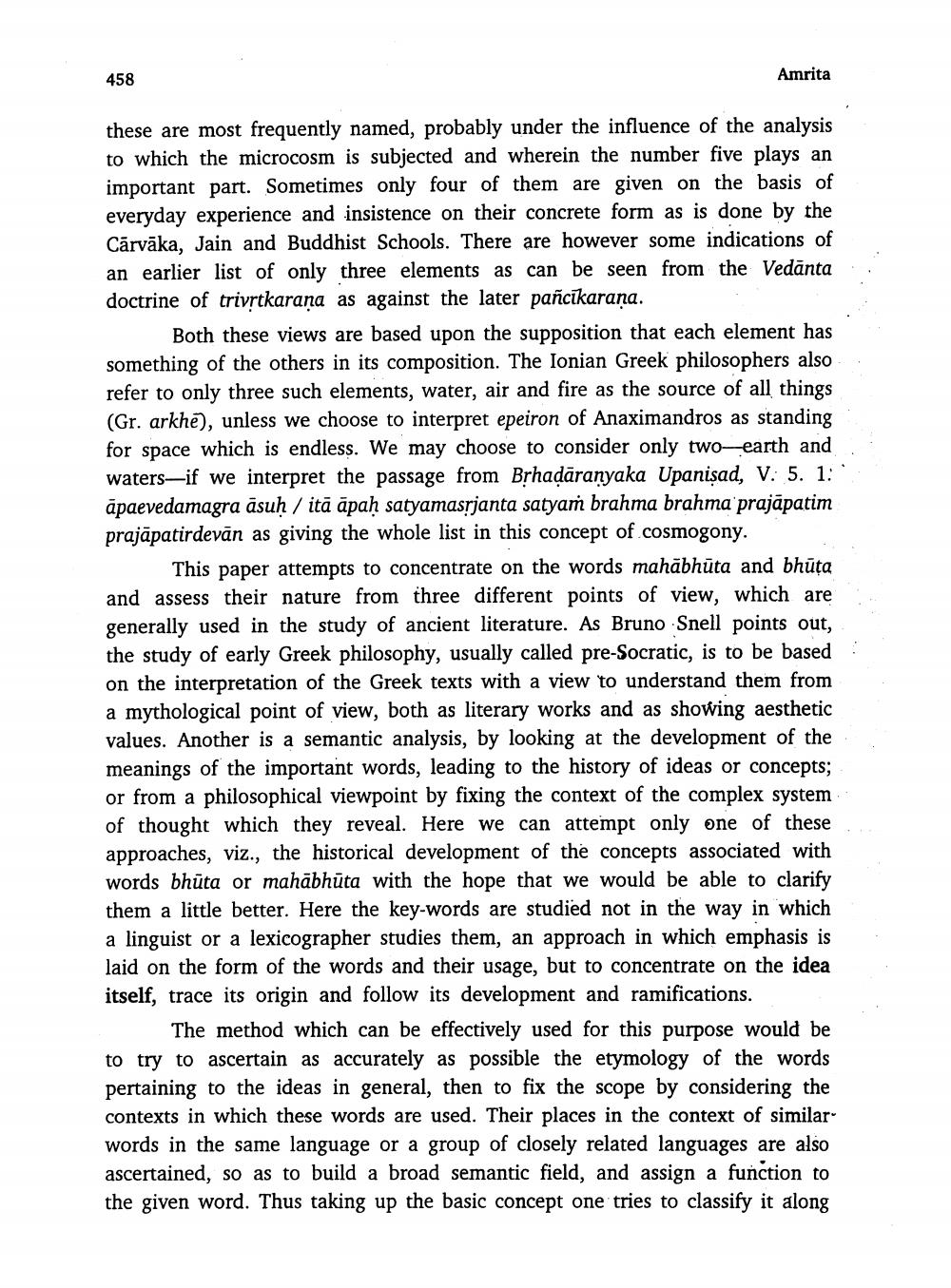________________
458
Amrita
these are most frequently named, probably under the influence of the analysis to which the microcosm is subjected and wherein the number five plays an important part. Sometimes only four of them are given on the basis of everyday experience and insistence on their concrete form as is done by the Cārvāka, Jain and Buddhist Schools. There are however some indications of an earlier list of only three elements as can be seen from the Vedanta doctrine of trivṛtkarana as against the later pañcikaraṇa.
Both these views are based upon the supposition that each element has something of the others in its composition. The Ionian Greek philosophers also refer to only three such elements, water, air and fire as the source of all things (Gr. arkhe), unless we choose to interpret epeiron of Anaximandros as standing for space which is endless. We may choose to consider only two-earth and waters-if we interpret the passage from Bṛhaḍäranyaka Upanisad, V. 5. 1: apaevedamagra äsuḥ/itä äpaḥ satyamasṛjanta satyam brahma brahma prajapatim prajapatirdevān as giving the whole list in this concept of cosmogony.
This paper attempts to concentrate on the words mahābhüta and bhuta and assess their nature from three different points of view, which are generally used in the study of ancient literature. As Bruno Snell points out, the study of early Greek philosophy, usually called pre-Socratic, is to be based on the interpretation of the Greek texts with a view to understand them from a mythological point of view, both as literary works and as showing aesthetic values. Another is a semantic analysis, by looking at the development of the meanings of the important words, leading to the history of ideas or concepts; or from a philosophical viewpoint by fixing the context of the complex system of thought which they reveal. Here we can attempt only one of these. approaches, viz., the historical development of the concepts associated with words bhūta or mahābhūta with the hope that we would be able to clarify them a little better. Here the key-words are studied not in the way in which a linguist or a lexicographer studies them, an approach in which emphasis is. laid on the form of the words and their usage, but to concentrate on the idea itself, trace its origin and follow its development and ramifications.
The method which can be effectively used for this purpose would be to try to ascertain as accurately as possible the etymology of the words pertaining to the ideas in general, then to fix the scope by considering the contexts in which these words are used. Their places in the context of similarwords in the same language or a group of closely related languages are also ascertained, so as to build a broad semantic field, and assign a function to the given word. Thus taking up the basic concept one tries to classify it along




